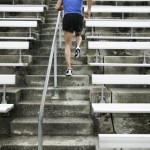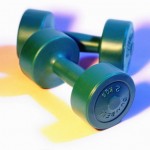 Terrified by the start of the holiday binge season? Spooked by warnings about high fructose corn syrup and peanut allergies? Haunted by documentaries of the chocolate industry’s dark side? Relax, Halloween can be plenty of fun without plenty of candy. Here’s a few tricks that can help you beat the temptations around you or at least result in less guilt….
Terrified by the start of the holiday binge season? Spooked by warnings about high fructose corn syrup and peanut allergies? Haunted by documentaries of the chocolate industry’s dark side? Relax, Halloween can be plenty of fun without plenty of candy. Here’s a few tricks that can help you beat the temptations around you or at least result in less guilt….
Break the Spell
• Instead of bags of cheap chocolates, bring home visually appealing sweets that aren’t quite so tempting for binges — sour or chewy candies, packaged fruit and nut treats.
• Search cookbooks and the Internet for fun, bite-sized, holiday-themed treats like peeled grape eyeballs, carrot fingers, yogurt strawberry ghosts, caramel apples and pumpkin pancakes. Look for recipes with less sugar or salt, and use healthy substitutes where possible.
• Talk with coworkers about ways to limit candy and other treats being brought to the office.
• When you do enjoy a treat, take time to really pay attention and savor it. This can reduce mindless snacking.
The Little Goblins
• Start the conversation a couple of days before trick-or-treating. Go in with a strategy on the rules about how many pieces of candy will be eaten each day, and make sure they have some input.
• Have them eat a meal prior to heading out and keep them hydrated, we turn to the candy more when we’re thirsty.
• When the bags come home, let the kids enjoy some reward. But then, help them sort through and decide what they really want to keep.
• Get rid of the candy that doesn’t matter to them, so it’s not sitting there to be used for mindless eating.
Keep your Halloween, safe, fun and healthy!
By Chanda Fetter
www.imxsb.net
IM=X Pilates Studio, Owner
IM=X Pilates Master Trainer
ACE, NASM, TRX, SPIN, IMX
NAWBO Board Member
 Subscribe
Subscribe






